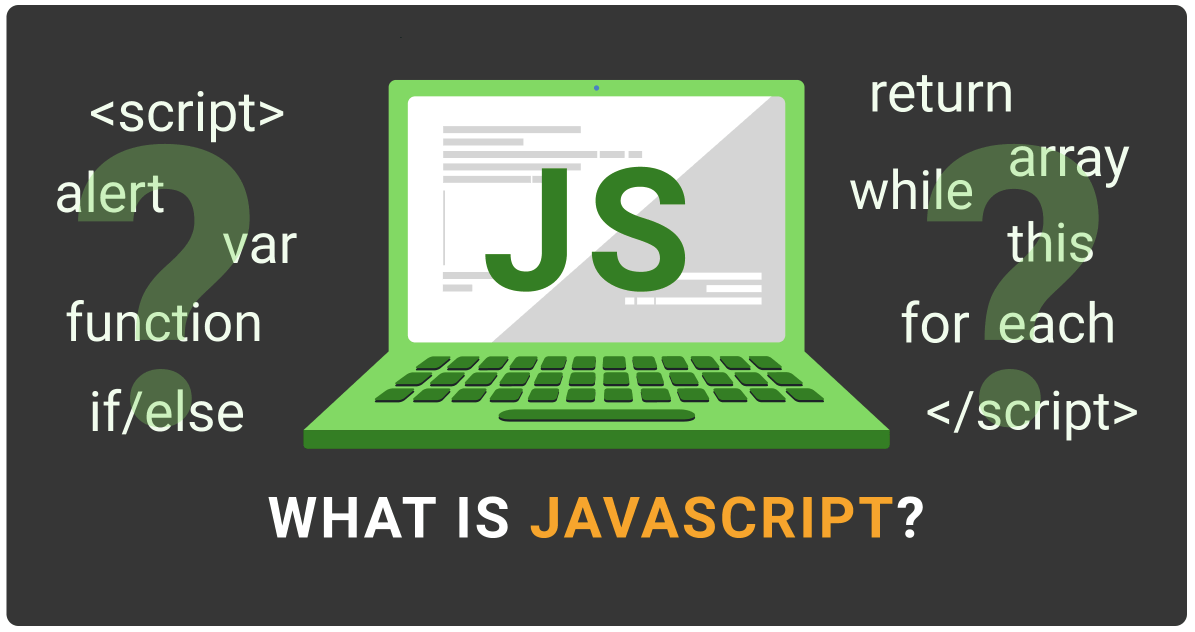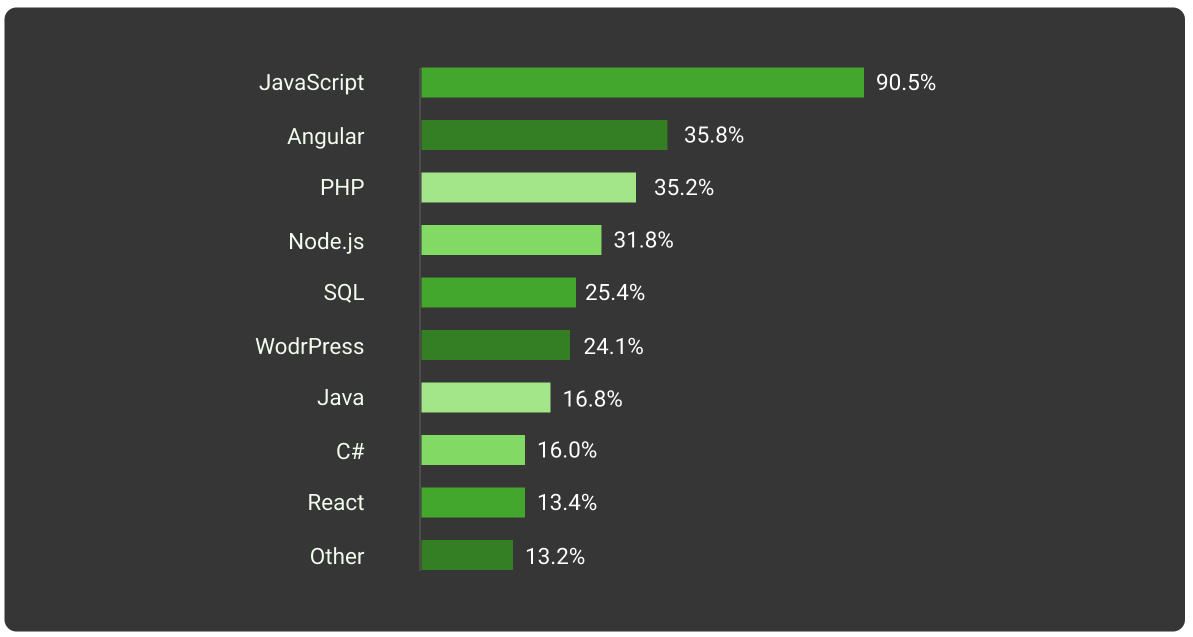Since the advent of the first websites, technology has come a long way. Now the majority of the pages we browse have dynamic content that offers constant updates and a profound user experience.
For a long time, this was achieved by using JavaScript. But, can it satisfy the needs of absolutely all projects? Despite the range of prevalence and accessibility to use, JS has a number of significant drawbacks that have led to the emergence of various alternatives for creating dynamic web pages.
Today we will talk about tools and programming languages that can replace JavaScript and how they are similar and different.
What Is JavaScript

In 1995, one of the most popular browsers was Netscape Navigator. In the same year, Brendan Eich was hired by Netscape Communications to expand the programmability of the web. This is how JavaScript was born, becoming one of the most used languages for creating the client-side.
Let's figure it out in order. Any website or web application consists of two main parts: backend (server-side) and front end (client-side). The backend processes user requests and returns the result. Roughly speaking, this is all that the user does not see on the screen. The frontend is what the user interacts with. These are the buttons on the page, animations, the locations of the elements, and so on. The frontend sends requests to the backend, where they are processed. Then the result is displayed on the frontend. Thus, to create a beautiful and reliable web application or website, you need to know the programming languages for creating the server and client sides.
JavaScript is an object-oriented programming language that is used to build interactive web pages. With this tool, you can easily change the elements’ styles on the page and add or remove tags. It opens access to all elements of the HTML code and makes it possible to manipulate them. Almost all web browsers support JavaScript. It is one of the most popular web programming languages.

Programming language popularity
Advantages of JavaScript
JavaScript is considered a standard in web development, as almost all web browsers are designed to run JS. Thus, using this tool, you can be sure that your dynamic content will display correctly in all browsers.

It should also be noted that JavaScript is quite simple to learn and can quickly and easily be mastered. At the same time, even non-programmers can easily use JS to run scripts and plugins.
Javascript is highly efficient. This is another reason why many companies use it to develop software. It means that dynamic elements will load pretty quickly. According to several independent sources, about 95% of all web applications are built using JS, including YouTube, Gmail, and Twitter.
Fortunately, JavaScript has some extraordinarily good parts. In JavaScript, there is a beautiful, elegant, highly expressive language that is buried under a steaming pile of good intentions and blunders.
― Douglas Crockford, JavaScript: The Good Parts
The Bad of JavaScript
So, we have already found out that JavaScript has significant advantages, making it demanded in the development of many products. But why, then, is the search for javascript alternatives becoming more popular every year?
The fact is that JS has some drawbacks that have pushed developers to create and implement new, more reliable tools for developing web products. The disadvantage of JS is that it is weakly typed, which makes the code less clear. Any user can see the page's JavaScript code in a browser and use it for fraudulent actions and violate the client-side’s security.
And finally, the lack of debugging in Javascript makes it significantly complicated to detect an error.
Are you looking for a reliable front-end developer to work on your project? KeyUA provides top-notch outsourcing services for creating highly productive web and mobile applications for any industry.
Contact UsBest Alternatives for JavaScript
So if you are looking for a good replacement for JavaScript in 2021-2022, consider the following languages for your project.
#1 CoffeeScript
This language was founded in 2009 by Jeremy Ashkenas and is now considered one of the most commonly used alternatives for JS. It implements many features of the Ruby and Python languages; however, it is now officially supported out of the box in Ruby on Rails.
A significant advantage of CoffeeScript is that it allows you to write less code for the same functions compared to other alternatives, making it easier to create scripts. CoffeeScript compiles to neat and clean JavaScript, and existing JavaScript can be included in CoffeeScript as it is.
Another additional feature of CS is the construction of massif builders, prototype alias, and classes. However, in order to write working code in CoffeeScript, you need JavaScript knowledge as well. Summing up, we can say that CS is a JavaScript, complemented by an elegant and friendly package of tools.
#2 TypeScript
If you are working on a large-scale application and are looking for a suitable JavaScript replacement, TypeScript is a great solution. Microsoft introduced this programming language in 2012. It behaves similarly to JavaScript, but with additional functions such as types, classes, modules. It is a potent tool for creating scalable projects with high productivity.
TypeScript also supports interfaces and namespaces that help you write maintainable and scalable code for complex applications. Besides, using TypeScript makes it easier to detect errors during compilation, which increases flexibility in refactoring. TypeScript is often compared to CoffeeScript. These are two excellent JavaScript substitutes, but with a different focus. While the first one is used for classes, the second is best for the masses.
One interesting note about TypeScript is that Angular is developed based on this technology! By the way, check this link to know the difference between Angular and React.
#3 ELM
This language was created in 2012 by Evan Czaplicki as his thesis in functional reactive programming for web interfaces. Haskell also influenced its architecture in many ways.
One of the important functions of this tool is the inclusion of static types and immutable values, due to which it gets rid of a significant proportion of errors in the code. Simply put, it is almost impossible to find a critical error during the execution of the task if the application is running based on ELM.
Another significant nuance that needs to be said about this language is that ELM has its own virtual implementation of DOM, which increases the speed and ease of code processing. Many tests show that ELM processes HTML even faster than Angular and React. It is great for implementing animation, 2D, and 3D games.
#4 Kotlin
Kotlin is a statically typed, object-oriented programming language that runs on top of the Java Virtual Machine. Since 2017, it is considered the official tool for developing Android applications. At the same time, Kotlin code can be compiled into Javascript to create dynamic web applications known as Kotlin/JS.
What is it for? Kotlin allows you to write safe JavaScript code and implement single business logic in the front-end, back-end, browser, and even mobile applications.
#5 ClojureScript
Another great JavaScript alternative for developers is ClojureScript. It is an implementation of Clojure programming language that compiles into a high-performance JavaScript and can work in all browsers.
Clojure is a dynamic and functional dialect of the Lisp language that runs on the Java virtual machine. And the support of Java libraries is one of the advantages of ClojureScript. The tool was released in 2007 to fix terrible JavaScript mistakes in the history of client-side apps development. Its interesting feature is that the same code can be launched both on the front-end and the back-end, expanding the range of application capabilities.
#6 Haxe
Haxe is an open-source, high-level, multi-platform programming language and compiler that you can use to build applications and generate source code for different platforms while maintaining a single codebase.
Code written in Haxe can be translated into ActionScript 3, JavaScript, Java, C #, C ++, Python, Lua, PHP, Apache CGI, and a Node application. All these features make Haxe another robust and viable alternative to JavaScript. It is actively used to create cross-platform apps, games, and frameworks. Its advantage is speed since it has the shortest time to compile and run in Chrome compared to other tools.
#7 Emscripten
JavaScript developers are frequently faced with difficult tasks, which are often already solved, but instead of being in the JavaScript they need, it is in a completely different programming language.
Rewriting tens or even hundreds of thousands of lines of code from C / C ++ to JavaScript can be a very stressful and time-consuming process. Thus, Emscripten was created. This compiler allows you to execute code on the Internet, no matter what language it was written in. Emscripten compiles LLVM bytecode into JavaScript code, which can be executed inside a web browser using only a standard JavaScript engine, without the need for additional plugins.
Are you impressed with the variety of solutions to replace javascript and unsure what to choose for your project? Read about how to choose the best tech stack for web app development.
#8 LiveScript
LiveScript was created on the basis of CoffeeScript and was first released in 2011. It compiles to JavaScript and covers both functional and object-oriented programming paradigms, making writing code, in general, easier and more accessible.
Besides, it also introduces small improvements to the current object-oriented programming model. All in all, it is a pretty good tool for creating high-quality JavaScript alternatives.
#9 ReasonML
ReasonML is one of the strong competitors of TypeScript and was created to extend the syntax and toolkit of OCaml (Objective Caml, a general-purpose, object-oriented, functional programming language). It can be easily compiled to JavaScript using BuckleScript.
When developing many applications, developers need various features (strong types, runtime validation, fast compilation times, and so on) that are already built into ReasonML, and this is the main reason why this tool is gaining popularity.
#10 Dart
Dart is one of the best alternatives to JavaScript for front-end developers that build structured web and native applications. It was released by Google in 2011 and has experienced great performance since then.
Dart has a standard library that gives developers almost limitless possibilities for creating quality scalable products. It uses an object-oriented approach found in Java and C ++, and its code can be easily converted to JavaScript to run in a browser. Dart advantages are as follows: easy learning curve, super portable, allows you to create various projects, up to mobile applications, updates are released every 2-3 months.
#11 Kaffeine
Kaffeine extends JavaScript syntax and simplifies debugging. It facilitates some tasks, which is especially useful for developing various kinds of interfaces. It works so that all requests happen in parallel and without waiting for answers to previous requests.
Thus, the browser does not freeze and does not affect user interaction. Kaffeine is also very convenient for testing, and in general, was created for professionals who want to have more programming capabilities than the classic JavaScript provides.
#12 Opal
And another tool that we will talk about is an object-oriented programming language, which serves as a compiler of source code from Ruby to JavaScript. At the moment, Opal is not very popular, but it can completely replace JavaScript for performing certain tasks. Its mission is to improve the capabilities of current object-oriented programming languages.
Despite the fact that Opal cannot be a serious competitor for JavaScript, it still falls into the list of workable alternatives given its advanced capabilities.
Conclusion
These 12 alternatives are really worth checking out and investigating more. Are any of them better than JavaScript? It is hard to answer this question, but it should be noted that all of the above tools have significant advantages.
At KeyUA, we have been developing web applications since 2008. During this time, our team has successfully delivered many quality projects that have conquered the market. Our full-stack developers possess significant experience in building scalable web and mobile applications of any complexity.
So if you are seriously interested in JavaScript alternatives in designing your product, we will be happy to help you make an informed decision.
Do you want your product to outperform the competition? Hire a dedicated team from KeyUA to take care of implementing quality code and developing an effective marketing campaign.
Contact Us







 Unit 1505 124 City Road, London, United Kingdom, EC1V 2NX
Unit 1505 124 City Road, London, United Kingdom, EC1V 2NX

Comments
Leave a comment